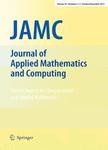版权所有:内蒙古大学图书馆 技术提供:维普资讯• 智图
内蒙古自治区呼和浩特市赛罕区大学西街235号 邮编: 010021

作者机构:Univ Airlangga Fac Sci & Technol Dept Math Surabaya Indonesia Seoul Natl Univ Dept Stat Seoul 08826 South Korea Phuket Rajabhat Univ Fac Educ Dept Math Phuket Thailand Seoul Natl Univ Interdisciplinary Program Bioinformat Seoul 08826 South Korea
出 版 物:《JOURNAL OF APPLIED MATHEMATICS AND COMPUTING》 (J. Appl. Math. Comp.)
年 卷 期:2025年第71卷第3期
页 面:3179-3209页
核心收录:
学科分类:07[理学] 070104[理学-应用数学] 0701[理学-数学]
基 金:Ministry of Science and ICT, Republic of Korea [2021M3E5E3081425] Phuket Rajabhat University, Thailand
主 题:Caputo fractional COVID-19 Hospital capacity Least-square method Symptom severity
摘 要:COVID-19, caused by SARS-CoV-2, has profoundly affected societies worldwide. The high number of cases, along with its widespread effects on health systems, economies, and daily life, has made COVID-19 a critical subject of study. In addition, the limited capacity of healthcare systems and the surge in COVID-19 cases have placed significant pressure on healthcare management. Focusing on the wide range of symptoms with varying severity, this study categorizes symptoms as mild or severe and develops a mathematical model to describe the spread of COVID-19 while accounting for symptom severity. The model incorporates both integer and fractional derivatives, using the Caputo operator, provides a more accurate representation of disease dynamics by capturing long-term dependencies in time-series data. Key properties of the model are analyzed, including solution boundedness, positivity, and the stability of equilibrium points. The model is applied to South Korea s COVID-19 data from June 1 to September 30, 2022, as training data, and from October 1 to 15, 2022, as testing data. The results show superior accuracy of the fractional model over the integer model, as measured by the Mean Absolute Percentage Error (MAPE). A key finding of this study is that prioritizing treatment for mild cases enhances hospital efficiency due to higher recovery rates, offering an effective strategy for managing patient flow under hospital constraints. This modified model, incorporating a saturated form of hospitalization rates, optimizes COVID-19 patient management by aligning treatment strategies with symptom severity, aiming to improve recovery outcomes while balancing the demands on healthcare systems.